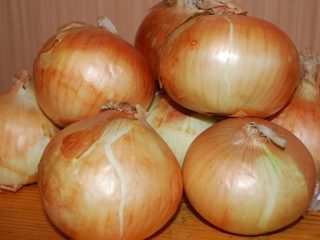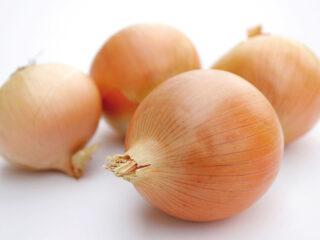Content
Classic onions were created for cultivation for production purposes. The stress-resistant plant produces seeds suitable for further propagation, has a semi-sharp taste, can be stored for a long time, and is practically disease-free. All these qualities are a priority for gardeners, so the variety is grown not only in fields, but also in small private plots.
Origin story
The originator of the Classic onion is Agrofirm Poisk LLC, on its basis in 2012 they created an improved version of the Chalcedony variety with stronger immunity and yield. In 2016, it was included in the State Register with recommendations for cultivation in open ground in the North Caucasus region. In the Central zone, it is possible to cultivate onions in unheated greenhouses with subsequent removal (at the end of spring) of the covering from the structure.
Description and characteristics of onions of the Classic variety
Classic is an early ripening variety, ripening in 100–120 days from germination. An annual crop is grown from seeds. To obtain seedlings, the growing season takes two years.
Classic onion germinates at +3–5 0C.In the loop stage does not tolerate temperature drops to -1–30 C, seedlings die. Therefore, in temperate climates, the plant during the initial phase of development is protected from possible return frosts.
Onions are drought-resistant; during the period of turnip ripening they can go without water for a long time. During the period of green mass formation, moisture deficiency is undesirable. The plant begins to lag behind in development, this affects the yield. Onions can be sown or planted directly in the garden to obtain early greenery, or grown in seedlings.
Appearance

Classic - a highly productive variety with large bulbs and dense green mass
Biological characteristics of onions:
- leaves are tubular, numerous, with a hollow structure, succulent without hard fibers, the characteristic does not change during the ripening process;
- the aboveground part is dark green, grows up to 15–20 cm;
- peduncles (arrows) are thick, hard, up to 35 cm high, a spherical umbrella inflorescence is formed on the top of the head;
- flowers are simple, small, bisexual, white;
- the seeds are numerous, black, flat on one side and convex on the other;
- round bulb, weight 100–130 g;
- the membranous part consists of two outer dry layers of light brown color, the inner one is juicy, white, less often with a green tint;
- The taste of onions is semi-sharp, with a moderately pronounced odor characteristic of the crop.

Shelf life of Classic onions is 7-8 months
Productivity
Harvesting begins when the leaves become dry and fall to the surface of the soil. The classic ripens from mid-July to early August.The timing depends on how warm and humid the summer was. The variety is classified as high-yielding. From 1m2 9–10 kg are collected. If we compare it with Chalcedony, on the basis of which the Classic variety was obtained, the first yields no more than 8 kg from the same area.
Resistance to diseases and pests
If the onion grows in an open area with light soil (without stagnant water), then the plant practically does not get sick. If these conditions are not met, the variety may suffer from downy mildew (downy mildew). A fungal infection is identified by spots on the leaves; the areas turn yellow and then turn gray.
To get rid of the disease, the following drugs are used: Bordeaux mixture, Fitolavin, Fitosporin. With high humidity, the neck rots, the plant cannot be saved, the onion is removed from the site in order to preserve the remaining specimens, and watering is reduced to a minimum.
The Classic variety is parasitized by onion fly or moth. The pest is eliminated by treating the entire planting with one of the following preparations: “Dachnik”, “Iskra”, “Karate Zeon”, “Metaphos”.
It is useless to fight the pest with chemicals. Sick plants are destroyed and the remaining ones are carefully examined. The infected area is not used for planting for 3–4 years.

Onion fly larvae feed on all parts of the plant and can completely destroy the bulb.
Application
The Classic variety is universal in use. It is used to flavor culinary dishes; the onion and feather are consumed fresh. Add to salads and winter preparations. In the food industry it is used as an ingredient for the production of semi-finished meat products, sausages, and chips.
Advantages and disadvantages
Before growing a crop, you need to familiarize yourself with its characteristics, identify its advantages and possible disadvantages. The Classic variety has many positive qualities.
Advantages of the variety:
- consistently high productivity;
- early maturation;
- possibility of cleaning by mechanization;
- transportability;
- nutritional value and good taste;
- long shelf life;
- versatility in application;
- can be grown for greens;
- strong immunity to most onion diseases;
- produces seeds for propagation.
The Classic variety has one drawback - its tendency to bolt. When flower stalks form, they must be removed.
Landing Features
A high yield of the Classic variety is possible only in a sunny place; the onion bed is set aside without shading, protected from the north wind. The soil chosen is aerated, light, fertile, without stagnant moisture. The composition of the soil should be slightly alkaline; if necessary, it should be adjusted in the fall.
Growing Classic onions from seeds
Planting material for Classic onions is collected in the third ten days of August. For sowing, use large seeds that are stored in a dry place. You can plant it immediately in open ground (approximately in mid-April).
Planting algorithm:
- The site is prepared in the fall, dug up, the bed is raised about 20 cm and compost is embedded in the top layer.
- At the beginning of the season, they loosen and remove the remaining weed roots.
- Make longitudinal furrows at a distance of 20–25 cm, 2 cm deep.
- The material is disinfected in a manganese solution. Sowed.
- After sprouting, the onions are thinned out. An interval of 5–6 cm is maintained between sprouts.
You can get seedlings first. Seeds are planted in March.The timing is adjusted taking into account the fact that after two months the Classic onions need to be planted in open ground. Grow seedlings in the standard way. Provide lighting for 13 hours. Water as the top layer dries, keep at a temperature of +20–220 C. Planted in a bed at a distance of 5-6 cm from each other. They maintain 20-25 cm between the furrows. They are buried to the level at which they grew in the container.

Before sowing on the plot, the seeds are placed in a damp cloth and germinated
Planting sets
You can purchase Classic onion sets or grow planting material yourself. Mother plants obtained from seeds are planted separately. When the buds appear on the receptacle, they are removed, the onion forms a replacement in the form of small children (bulbs). The same small bulbs develop on stolons, the root bottom underground from vegetative buds.
How to plant sets of the Classic variety:
- The area is being dug up. If the soil is heavy, add sand.
- Organic matter is scattered on top and covered to 4 cm.
- The furrows are made at a distance of 25 cm. The depth is determined by the height of the set; the neck should protrude slightly on the surface.
- The material is heated for 12 hours, then treated with any antifungal drug.
- The upper part of the neck is cut off by 30 mm.
- Distribute the material in the furrow at a distance of 6–7 cm and cover with soil. If the soil is dry, then water it.

Onions are planted bottom down
Rules of care
Onion agricultural technology Classic:
- Water at the beginning of growth twice every 7 days. Until mid-June, the regime is halved, then water is given only at the root during drought. In July, the growing season is aimed at the formation of the bulb; excess moisture will only cause harm.
- Feed Classic onions with organic matter. Fresh compost is used when growing crops for feathers.
- To obtain a bulb, complex mineral fertilizer is applied in the spring. If compost was laid during planting, then fertilizing is no longer needed.
- The root system of the Classic onion is weak, so regular loosening of the bed is necessary.
Weeds should not be allowed to appear; they are removed manually by the roots so as not to damage the bulb.
Conclusion
Classic onion is a productive variety for universal use. The crop is grown on an industrial scale and in small personal plots. The plant is unpretentious, with high immunity, rarely gets sick and is damaged by pests. It tolerates transportation well and retains its presentation for a long time.
Reviews from gardeners about Classic onions








